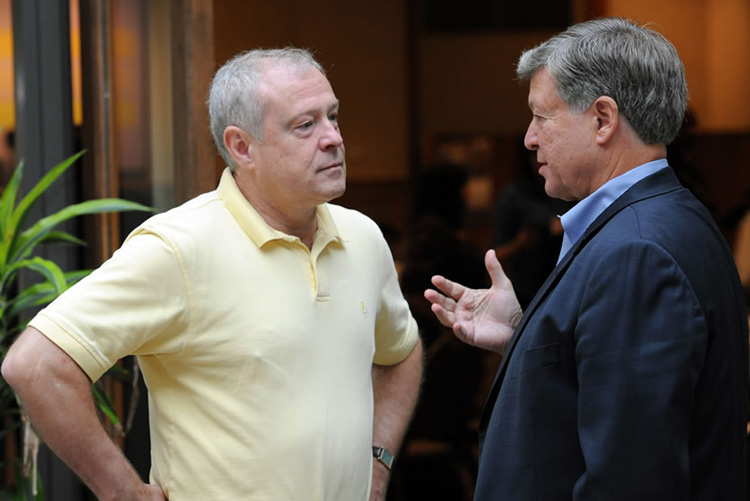
“I had no idea you did that!” the donor said.
And that, my friend, is where it all starts to go bad or good, depending on how the MGO handles it.
Picture this…
 You have qualified the donor for your caseload. You have even uncovered her passions and interests. But when you are on the phone with her, or sitting in her place of business, or in her home discussing what you DO, she uses some combination of what I call “the lack of awareness phrase.” It could be the old standard “I had no idea” or “Really! You do that?” or “I thought all you did was X?!”
You have qualified the donor for your caseload. You have even uncovered her passions and interests. But when you are on the phone with her, or sitting in her place of business, or in her home discussing what you DO, she uses some combination of what I call “the lack of awareness phrase.” It could be the old standard “I had no idea” or “Really! You do that?” or “I thought all you did was X?!”
There is obviously some combination of confusion and delight as the donor is escorted, through your words, into all the rest of the rooms of your house. Now she is getting the full picture of what you do.
We experience this kind of blissful ignorance in every situation we are involved in. Every one. And it’s not because someone in the organization is trying to hide something. Nope. It’s just that the insiders always make an assumption that donors know more than they do.
This situation is caused by familiarity. You are immersed in the work day in and day out. And as more time passes, you become less aware of the growing gap between what your organization does and what your donor knows about it. We have even found many situations where even the people INSIDE the organization don’t know what their own organization is doing.
Last month, after several months of cataloguing what this very large national organization actually did and putting it into a one-page handout, I met with one group of MGOs and another group of leaders and managers. We were meeting to discuss how we might come up with more donor offers for the MGOs to use. I handed out my sheet of paper and said: “So, here is what you do. I am sure you are all aware of this.”
I was not surprised when a number of people, in both groups, confessed that they did not know the organization did all the things that were on my sheet of paper. It happens all the time, and it represents a failure of leadership to properly acquaint themselves with the programs their organization operates and also to train their down-line on the same subject.
This is fascinating to me.
In the commercial sector, there is a great deal of effort made to make sure everyone knows what the company is selling – if not every item of a product line, then at least the categories of products. And certainly, the front-line sales people must know all the details. There is a rigor in the commercial sector on this subject that is missing in the non-profit world.
Awareness – a critical first step in getting a meeting with a donor. Here are three steps you should take to make sure you are fully functional in this area:
- Make sure YOU are aware of what your organization does. Sit with program people, ask questions, make lists and make sure you understand what your organization is doing. Sounds basic, I know. But Jeff and I often encounter MGOs who just do not know this material. So start here.
- Make sure your qualified caseload donor is aware of what you do. It doesn’t have to be a four-hour in-depth session where you cover every detail. Nope. Just give him or her the overview, so there is an understanding of how your organization is fulfilling its mission.
- Increase awareness in those areas that match the donor’s interests and passions. So here is an important nuance. It is true that your donor is generally interested in everything your organization does – after all, she did give to you, and she gave at a rate that qualified her for major donor status – so she is interested in the overall cause. But there are categories of your work (or sub-categories, or locations or types of people served, etc.) that she is more interested in than others. You need to figure out what those are, then increase the donor’s awareness in those areas. Don’t just stay up at the general level. Get down into what the donor is interested in.
You will need to increase the donor’s awareness through the use of information (content for the head and intellect) and stories (material for the heart), so that the donor gets to a point of full awareness. Take steps to do this with all of the donors on your caseload over the next several months, and you will be on your way to creating an environment that is positive and energized – one where you can work toward the next critical steps of the commitment curve.
Richard
Series details:
- Introduction to series: Five Relationship Steps to Get Meetings
- Step 1: Creating Awareness (this post)
- Step 2: Identify Interest
- Step 3: Creating Desire
- Step 4: Cause Engagement
- Step 5: Get Commitment







0 Comments